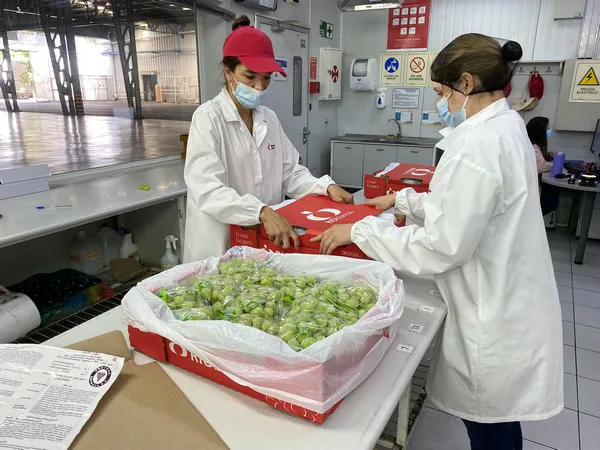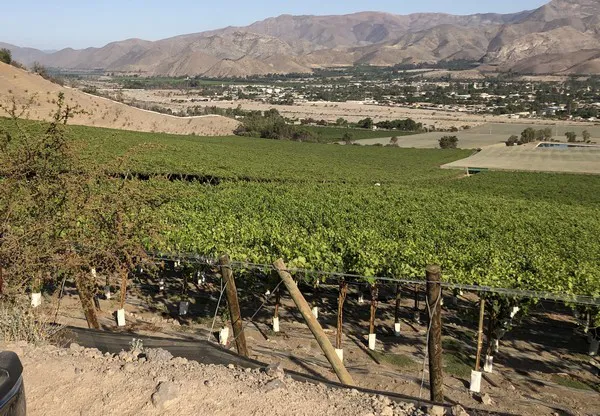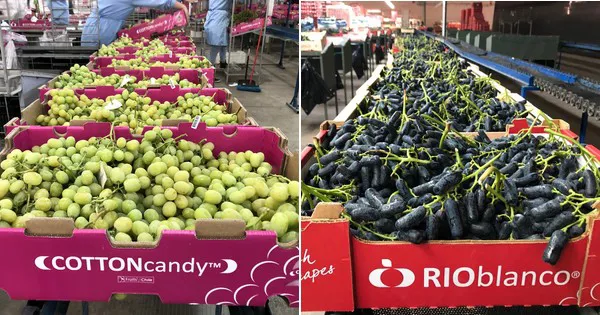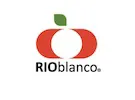“The Chilean grape crop depends more on the economics and on the ability of the growers to have the working capital to grow the fruit properly.” So says Nicolas Damm of Rio Blanco of the upcoming Chilean grape crop, a critical season for the country. “That’s the major issue today.”
 “It depends on how bad the growers' results were last season and their ability to get financing for their new crop,” says Damm.
“It depends on how bad the growers' results were last season and their ability to get financing for their new crop,” says Damm.
As he notes, the potential for the same volume of grapes as the country had last season is there. But it’s ultimately about money. “It depends on how bad the growers' results were last season and their ability to get financing for their new crop,” says Damm. “Each hectare needs quite a bit of money before we see the income and last season was a disaster for many growers.” Not only did Chile get a later start to its grape season last year but logistics issues were headaches for many growers and exporters. “Therefore the banks are now being restrictive and export companies are as well on giving advances to growers.”
The newly formed Chilean Grape Committee has recently published its season estimates of around 68 million cases. (Last season produced 74 million cases.) “We still believe that number to be a bit high and think that it will decrease a bit as we get closer to the season. Many growers are just finding out about the final results of last season and dealing with the difficulties the new season is showing,” Damm says.
 The newly formed Chilean Grape Committee has recently published its season estimates of around 68 million cases. (Last season produced 74 million cases.)
The newly formed Chilean Grape Committee has recently published its season estimates of around 68 million cases. (Last season produced 74 million cases.)
Variety, sizing and quality limitations
As he notes, if a grower has a high percentage still of traditional varieties, they’re going to have a lot of trouble given retail programs, particularly in the U.S., have many limitations on varieties and sizing and quality. “And the traditional varieties, many of those vineyards are old and the yields are not there anymore. It’s difficult to get enough volume from them to make a profit,” adds Damm.
Meanwhile, the demand is expected to be there for Chilean grapes. “But U.S. retailers are being more selective. They’re also getting a bit of better supply from Peru so they’re going for longer with Peru,” he says. Additionally, the low European exchange rate and high costs may make Europe less attractive for Chilean growers and instead, they may concentrate on sending fruit to the U.S. market.
 The team from Rio Blanco.
The team from Rio Blanco.
That said, growers and exporters have learned from last year’s challenging season. “If the logistics are better and the final consumers receive fresher, better quality fruit in better condition, movement should be faster in the U.S. Hopefully prices don’t trend too low at the peak of the season,” Damm says.
Same costs to growers
While pricing estimates are early, Damm notes it has tried for stronger pricing this year to absorb those increased input costs. “But even with a $2 increase in sales pricing, the return to the grower would be the same as two seasons ago, maybe worse. The freight costs and the costs at the destination are really affecting the final results for the grower,” he says.
Though hopefully, the logistics picture will be better for Chile this season. The grape association has worked with the Chilean ports to improve their operations and efficiency. “And hopefully at the destination, the shipping companies are working closely with the ports in the U.S. for logistics to be better. Fumigation is still a big bottleneck,” Damm says. Though there’s the possibility of implementing a systems approach for Chilean grapes from some regions for the second part of the season. “We hope that that can be a reality,” he adds.
 Damm says there’s the possibility of implementing a systems approach for Chilean grapes from some regions for the second part of the season.
Damm says there’s the possibility of implementing a systems approach for Chilean grapes from some regions for the second part of the season.
Overall Damm stresses this season is a particularly important one for Chilean grapes. “We have to show the U.S. market a good product so we don’t keep losing ground to Peru in the early part and Mexico in the late part. And to keep the high regard of Chilean grapes. We have to gain back ground on the quality that was lost last season due to external factors,” he says. “Chilean exporters and growers have to be really careful on what they grow and what they export.”
 For more information:
For more information:
Nicolas Damm
Rio Blanco
Tel: +56 (2) 2307 4100
nicolas.damm@rioblanco.net
www.rioblanco.net
